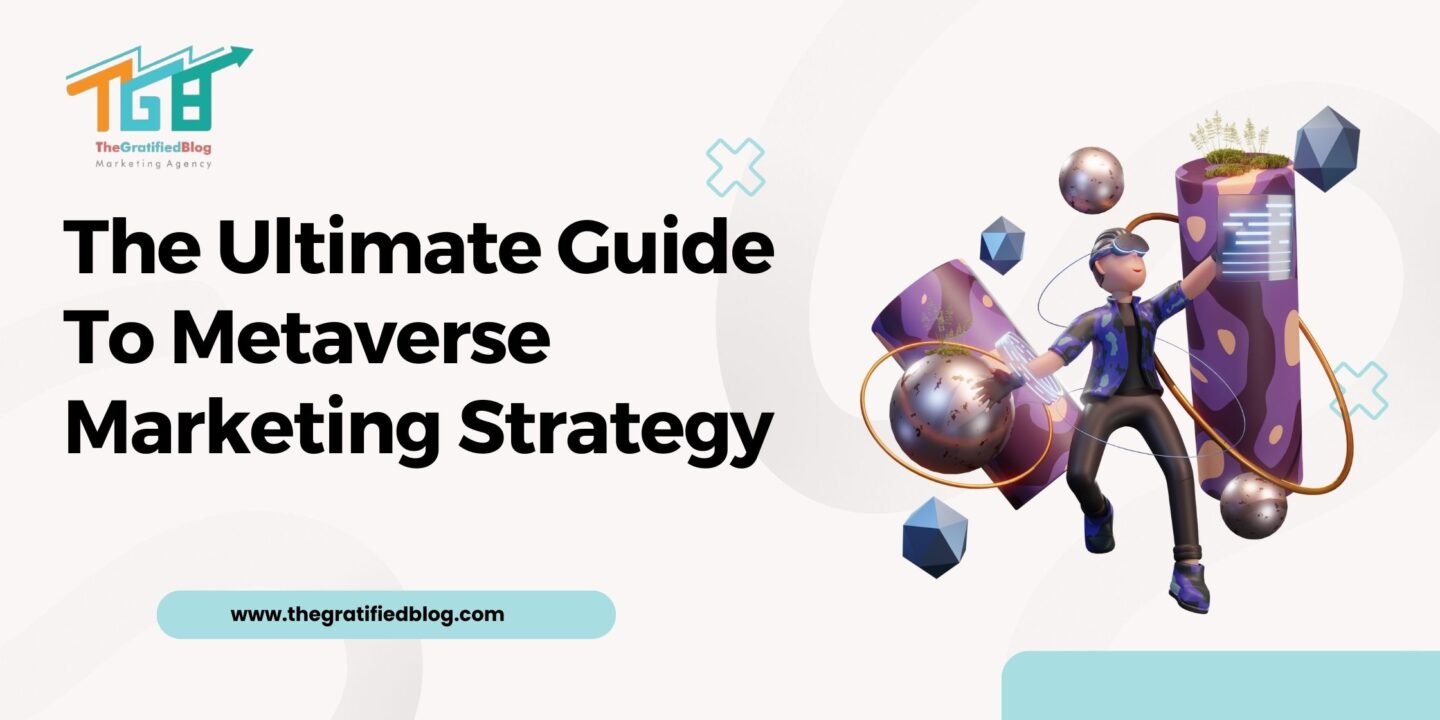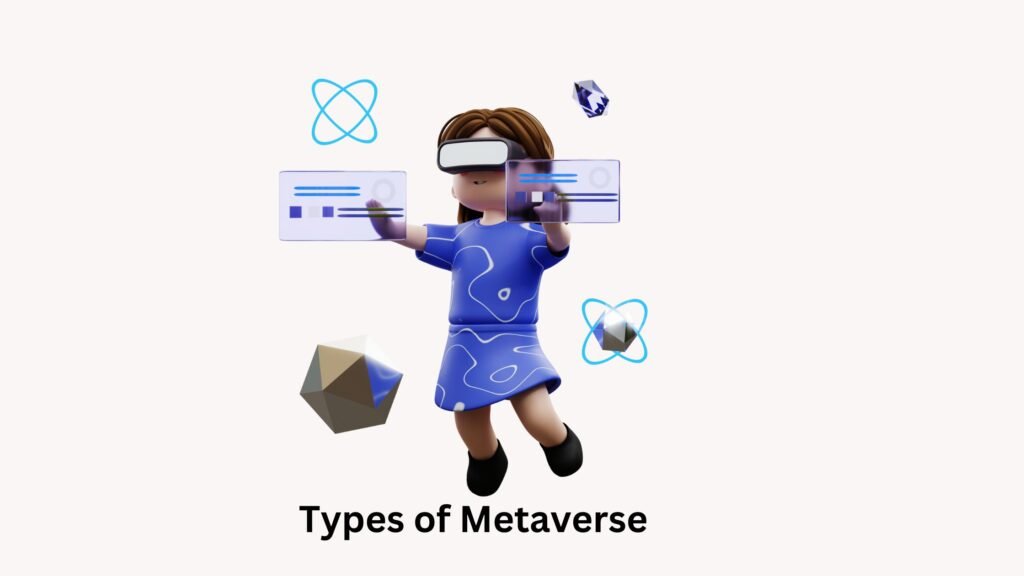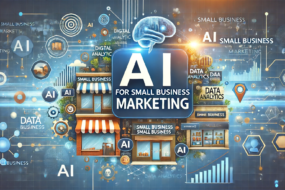
In the constantly evolving landscape of digital marketing, there is a term buzzing with excitement and anticipation: the metaverse. This interconnected, immersive digital universe is gaining momentum, and forward-thinking businesses are already considering metaverse marketing strategies to tap into this new realm of possibilities. This extensive guide will thoroughly explore the metaverse and the essential elements of a successful “metaverse marketing strategy.”
What Is The Metaverse?
The term “metaverse” is often used to describe a collective virtual shared space, merging AR and VR environments where users can engage with one another and digital objects in real-time. This interconnected digital universe is not limited to a single platform but encompasses various digital spaces.
The metaverse concept has been introduced previously, with roots dating back to science fiction. However, it has gained significant traction recently, propelled by technological advancements and the expanding interest in immersive experiences.
Critical Elements Of The Metaverse
Companies like Facebook (now Meta), Google, Microsoft, and many startups actively work on Metaverse-related technologies and platforms. The vision of the metaverse marketing strategy holds significance for various industries, encompassing gaming, entertainment, education, social networking, business collaboration, and more.
Key characteristics of the metaverse may include:
- Virtual World: The Metaverse typically consists of a vast, shared virtual space where users can interact with each other and digital environments. This space can be accessed through various devices, like virtual reality headsets, augmented reality glasses, or traditional screens.
- Interconnectivity: Different parts of the metaverse are interconnected, enabling users to move seamlessly from one virtual world or environment to another. A standard technology or protocol may facilitate this interconnectedness.
- Persistence: The metaverse is persistent, indicating that it endures and evolves even in the absence of user activity present. This allows for long-term, ongoing experiences and interactions.
- User-Generated Content: Users often can create and modify elements within the metaverse, such as avatars, objects, and environments. This user-generated content contributes to the dynamic and evolving nature of the metaverse.
- Economy and Commerce: Some envision the Metaverse as a place where real-world economic activities, such as buying and selling virtual goods and services, can occur. Cryptocurrencies and blockchain technology may play a role in facilitating virtual commerce.
- Social Interaction: A crucial element of the metaverse involves users being able to communicate and interact with each other in various ways, making it a space for both work and leisure.
- Immersive Experiences: Immersive technologies like virtual and augmented reality are often seen as critical components of the metaverse, providing a sense of presence and immersion in the digital world.
What Are the Four Types of Metaverse?
The metaverse concept is evolving, encompassing various virtual, immersive, and interconnected spaces. However, there are different ways to categorize or describe other aspects or use cases of the metaverse.

Here’s a more general classification of aspects or use cases associated with the metaverse:
- Social Metaverse
The Social Metaverse prioritizes social interaction and communication within virtual environments. Users immerse themselves in virtual worlds like Second Life, VRChat, and Meta (formerly Facebook) platforms, where they can socialize, connect with friends, participate in events, and share experiences.
This metaverse category creates a digital space that mirrors aspects of the physical world, fostering a sense of community and connection. Platforms in the Social Metaverse focus on building shared virtual experiences, providing users with opportunities to engage in various social activities, ultimately shaping a digital landscape that transcends traditional online interactions.
2. Virtual Reality Metaverse
Virtual Reality (VR) platforms are integral to the metaverse, offering users immersive experiences within entirely digital environments. These environments extend beyond gaming, encompassing VR conferencing and social interactions. Users can explore diverse VR-based activities, creating a digital space where the lines between reality and the virtual blur world blur. This facet of the metaverse capitalizes on advanced VR technologies to provide engaging and interactive experiences across various domains.
3. Work and Business Metaverse
The Work and Business Metaverse leverages virtual spaces and technologies for professional purposes. This includes creating virtual offices, collaborative tools, virtual conferences, and solutions tailored for remote work. Companies like Spatial and AltspaceVR contribute to this metaverse aspect by offering services that facilitate virtual collaboration, enhancing efficiency and connectivity in a digital workspace.
4. Entertainment and Gaming Metaverse
The Entertainment and Gaming Metaverse is a driving force behind the metaverse concept, focusing on the immersive and interactive aspects of the gaming industry. Video games, virtual worlds, and gaming platforms, such as Fortnite, Roblox, and blockchain-based gaming platforms, play a central role.
This metaverse facet provides users with diverse and engaging entertainment options, emphasizing the creation of virtual environments designed to meet a broad spectrum of gaming experiences.
10 Effective Metaverse Marketing Strategy
Marketing in the metaverse is a relatively new and evolving concept, but it offers unique opportunities for businesses to interact with their intended audiences in immersive, interactive, and novel ways. Developing a marketing strategy for the metaverse requires understanding the platforms and technologies involved, the audience, and the goals of your marketing campaign. Here are some critical considerations for a Metaverse marketing strategy:
- Platform Selection: Identify the platforms or virtual spaces within the metaverse that align with your target audience and marketing objectives. Popular platforms include virtual reality environments like Oculus, social spaces like VRChat, or emerging Metaverse platforms offered by companies like Meta (formerly Facebook).
- Audience Analysis: Understand the behavior and preferences of your target audience within the metaverse. Different age groups and demographics may use these platforms differently, so tailor your strategy accordingly.
- Branded Virtual Spaces: Consider creating or sponsoring virtual spaces or experiences that align with your brand. This could include hosting virtual events, pop-up shops, or interactive environments that uniquely engage users.
- Virtual Reality and Augmented Reality: If your audience is in virtual reality (VR) or augmented reality (AR) environments, create immersive and interactive content and experiences. This might include 3D ads, interactive product demonstrations, or VR showrooms.
- Content and Storytelling: Storytelling remains crucial. Use immersive storytelling techniques to create experiences that resonate with users. Think about how your brand’s narrative fits into the metaverse context.
- Community Building: Engage with the Metaverse community by participating in discussions and events or creating virtual communities. Building a presence and relationships within the metaverse can be as important as traditional advertising.
- User-Generated Content: Encourage user-generated content within your branded spaces. Let users create, share, and collaborate within your virtual environment, and feature this content in your marketing efforts.
- Virtual Goods and NFTs: Explore the potential of virtual goods and non-fungible tokens (NFTs) to create digital assets and collectibles tied to your brand. This can drive fan engagement and a new form of brand loyalty.
- Metrics and Analytics: Utilize Metaverse-specific analytics tools to measure the performance of your marketing campaigns. Metrics include user engagement, dwell time, social interactions, and conversion rates.
- Regulations and Ethics: Stay informed about the evolving legal and ethical considerations in the metaverse, especially those related to privacy, data, and virtual currency transactions.
What Companies Are Using the Metaverse In Marketing?
The use of the metaverse in marketing has likely continued to grow and evolve since then. Some notable companies and brands that were actively exploring or using the metaverse marketing strategy in their efforts as of that time include:
- Meta (formerly Facebook): Meta stands as one of the pioneers in the metaverse space. They have been actively developing metaverse-related technologies and platforms, such as Horizon Workrooms, for virtual meetings and collaboration.
- Roblox: Roblox is a gaming platform driven by user-generated content that has allowed brands to create virtual experiences and games within their environment. Companies like Gucci, Nike, and others have launched virtual items and experiences on Roblox.
- Epic Games (Fortnite): Fortnite has hosted numerous in-game events and collaborations with brands and artists. For example, they held concerts within the game and introduced virtual items from various brands.
- Decentraland: Decentraland is a blockchain-based virtual world where users can own, build, and monetize virtual spaces. Brands like Atari have established a presence in Decentraland.
- Nike: Nike created a virtual world within Roblox to launch new sneakers, allowing players to interact with and purchase virtual versions of their products.
- Gucci: Gucci has partnered with platforms like Roblox and The Sims to offer virtual clothing and accessories for users’ avatars. They also hosted a virtual fashion show on Roblox.
Why Metaverse Marketing?
Metaverse marketing is a strategic approach that leverages the metaverse’s growing virtual and digital landscape to promote and engage with audiences. There are numerous compelling reasons why businesses are progressively interested in metaverse marketing:
The Rise of Virtual Reality (VR)
Virtual reality has moved from being a niche technology to a mainstream phenomenon. The widespread adoption of VR headsets and platforms like Oculus has paved the way for the metaverse.
The Potential Market in the Metaverse
The metaverse represents a massive potential market, with millions of users active in various virtual worlds. This offers a distinctive opportunity for businesses to connect with a global audience.
Competitive Advantage and Early Adoption
Early adopters of metaverse marketing strategies can gain a competitive edge by establishing their brand presence in the metaverse before it becomes saturated.
Conclusion
The metaverse is a groundbreaking frontier for marketing, providing significant potential for businesses to engage with audiences in novel and engaging ways. We’ve journeyed through the essential components of a metaverse marketing strategy. Your brand can thrive in this digital realm by understanding the metaverse, tailoring content, engaging with the community, and embracing innovation.
Stay ahead of the curve and keep the conversation going by leaving your thoughts and questions in the comments below. The metaverse awaits, and your journey is just beginning.








No Comments